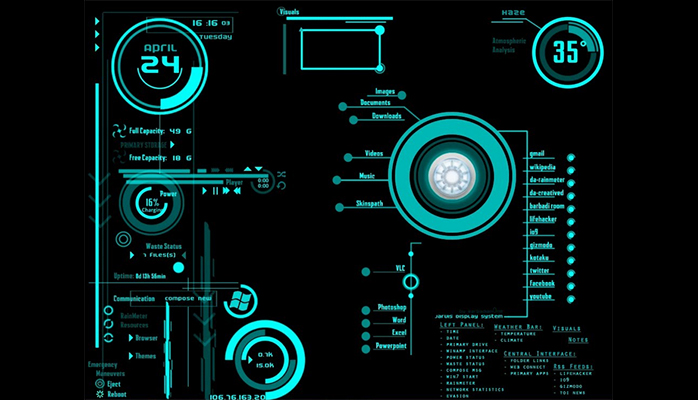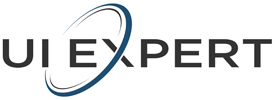How to Protect Your Valuable User Interface Intellectual Property

A well-designed, attractive user interface is valuable. In fact, it may be one of the most valuable components of your software. Apple built the biggest company in the world on best-in-class design and usability. If you develop software, you should be aware of the value of your user interface (UI), whether you should take steps to protect it, and whether you may be at risk of infringing on another UI.
The tools used to protect intellectual property such as user interface–copyrights, trademarks, and patents–are complex. Further, because they were originally intended to protect mechanical devices and works of art and literature, adapting them to software development has introduced additional complexity. This brief article will introduce you to intellectual property protection so that you can make a decision about any next steps that you might want to take regarding your software user interface.
There are three mechanisms that are commonly used to legally protect software UI: copyright, trade dress, and patents.
Copyright
Software code can and should be copyrighted, but copyright is not a very powerful way to protect a UI. Years and years of legal copyright precedents were established before anyone envisioned the need to copyright graphical user interfaces, so the courts are still sorting out the application of copyright law to modern software development. This means that there is still uncertainty as to how any UI copyright protection you obtain will be interpreted in court.
In general, you can copyright the expression of an idea, but not the idea itself. So you couldn’t copyright the idea of a clickable button, but you could copyright the artistic design of a specific button; for example, Apple’s original Trashcan icon is protected by copyright.[1] Similarly, you couldn’t copyright use of a pop-up dialog box to explain a concept, but you could copyright your specific written explanation.
The more artistic and original your design is, the more protection copyright may offer. But protection offered by copyright is limited and, while copyright may protect some individual design elements, copyright is not a good way to protect an overall user interface. That said, UI copyright protection is not difficult or expensive to obtain, and is often recommended for the limited protection it does provide.[2]
Trade Dress
Trade dress “refers to the characteristics of the visual appearance of a product or its packaging… that signify the source of the product to consumers.”[3] In other words, trade dress refers to the attributes of a product that make it recognizable. The bar for trade dress protection is relatively high: one key requirement is that the item must be highly recognizable and well known by the general population (think of a Coke can). Trade dress can also be difficult to obtain, and trade dress protection interacts with copyright protection in complex ways.
Despite these drawbacks, trade dress may be used in some situations to supplement UI copyright, or alone if a UI element is not considered sufficiently original to be copyrighted. Trade dress, within its limitations, is also better suited to protecting overall look and feel, compared to the protection of specific UI elements offered by copyright.
Patents
In many ways, patents are the best tool for protecting a user interface:
- Legally, patents are better suited to protecting things that perform a function (remember that copyright was originally intended to protect non-functional art, literature, etc.). Individual patents can also be written in a way that they protect overall look and feel as well as individual design elements.
- The infringement threshold is lower. Copyright infringement requires copying, while patent infringement can be proven if a design is sufficiently similar but is not a copy.
- Patents do not have a fair use provision. Fair use allows limited use of copyrighted material without asking for permission; for example, I’ve directly quoted some sources in this article, and that’s permissible under fair use, but I do not have the right to reuse patented material in a similar way.
Consequently, software developers have accumulated thousands of patents and most court cases over user interface intellectual property are patent infringement cases. Apple vs. Samsung is the best known example.
User interfaces can be protected by design or utility patents:
- Design patents are “issued for a new, original, and ornamental design embodied in or applied to an article of manufacture.”[4] Design patents are issued for designs that are novel, non-obvious, and non-functional.
- Utility patents are “issued for the invention of a new and useful process, machine, manufacture, or composition of matter, or a new and useful improvement thereof.”[5] Utility patents are evaluated based on the “operability of the invention, a beneficial use of the invention, and practical use of the invention.”[6]
If you are considering a UI patent, an intellectual property attorney can be very helpful, not only in deciding what can be patented but also in how the patent should be structured and written so that it provides the desired protection. The attorney may bring in a UI expert for additional support.
Next Steps
Protecting intellectual property is not something you should tackle alone. Obtaining expert help is a necessary and early step. Here are some things to consider when deciding if you need to take this step.
- Patents are issued for novel ideas–that’s a key main criterion. If you think your user interface implements something no one has done before, you probably want to consult with an expert to assess whether it truly is unique, and to guide you through the process of protecting your intellectual property.
- Those looking for venture capital funding should also investigate intellectual property protection, as investors will want some assurances that your ideas cannot be easily copied.
- If you are concerned that you may have infringed on a patent or copyright, an attorney or expert can advise you on what is known as freedom to operate– how similar your design can be to another company’s design and/or intellectual property without risking infringement. For example, if you are working with publically available standard UI libraries and design elements you are probably in safe territory.
- However, if you copy someone else’s artistic design you may be at risk for copyright or patent infringement; for example, if you probably can’t downloaded an image from Flickr and used it in a commercial product without permission. Similarly, if your user interface is substantially similar to another product (like Samsung’s designs were alleged to be substantially similar to Apple’s), you may be at risk. Again, an attorney or expert can advise you regarding freedom to operate.
- Generally speaking, the bigger you are the more the risk. Big companies have more to worry about, and more at risk (i.e. deeper pockets), than a lone developer who writes an app. But small- to medium-size companies do face some risk.
Design patents are becoming more and more common. In 2014, the U.S. Patent Office received 35,378 applications for design patents. This number has been climbing: there were 25,515 applications in 2006 and 18,280 in 2001.[7] That’s nearly double over 10 years. Companies are protecting themselves. If any of the circumstances listed above pertain to you, it would be prudent to investigate protection for your intellectual property.

